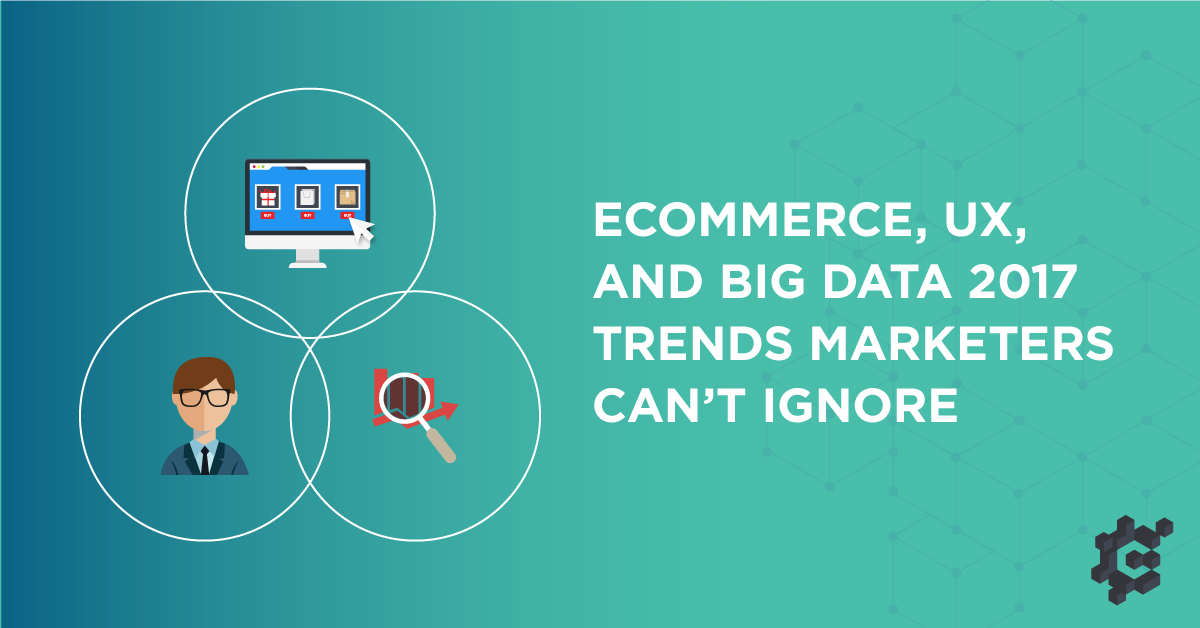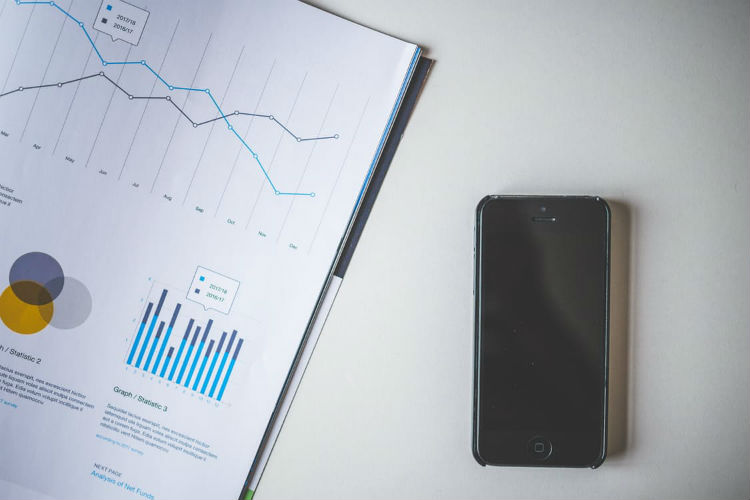

Marketers! Here Are the Must-Know 2017 Digital Trends: Part 2


In part 1 of our mini-series on the 2017 digital trends, we examined developments in three key fields: SEO, social media, and content marketing. We also talked about what these developments mean for marketers and how they can update their marketing strategies accordingly.
This second and final part focuses on another three fields: eCommerce, user experience (UX), and big data.
What Marketers Need to Know about eCommerce in 2017

What’s Hot?
Marketers need to stop thinking of 'mobile users' and 'desktop users' as different people. Because they're not. The average household has 7.4 internet connected devices. A 'mobile user' one minute is a 'desktop user' the next." ~ Robert Allen
- Mobile. Visits to retail websites via mobile have overtaken desktop traffic in some countries like the United Kingdom. Mobile search has also skyrocketed so much in recent years that search engines are taking serious note. Since it announced in 2015 that mobile search has surpassed desktop searches in its search engines, Google has taken various steps to prioritise mobile search. One recent move is its announcement in November 2016 that it is beginning experiments to make its index mobile-first.
- Omnichannel marketing. The shift to mobile is real, but not all customers are comfortable making mobile payments. A 2016 study by Wolfgang Digital found that while mobile (phone and tablet) accounted for 59% of all sessions by device on eCommerce sites, mobile browsers contributed just 38% of revenue. Mobile is popular for research, but desktop is popular for purchases, especially for big ticket items like holidays.
Read about these predictions in detail over at Digital Doughnut and Smart Insights.
What These Mean for Marketers
If you want to maximise your sales, you need to ensure great online shopping experiences across all devices.
- Mobile friendly e-commerce websites are a must. As mentioned in part 1, businesses have little choice but to ensure that their websites are mobile-friendly. Slow load times, websites that do not scale, and poor navigation are some examples of frustrating mobile experiences that can cause your customers to give up and leave. Use Google’s mobile-friendly test to check.
- But don’t forget desktop and tablets! A key reason why mobile is not so popular for payments is that many customers are worried about the privacy and security of their data. Until these concerns are addressed, you still need to ensure great online shopping experiences on desktop and tablets.
Another compelling reason for an omnichannel marketing strategy: multichannel shoppers shop more often and spend over three times more than single-channel shoppers.
What Marketers Need to Know about UX in 2017

What’s Hot?
You should message a business just the way you would message a friend.” ~ Mark Zuckerberg
- Conversational UX. Conversational UX is defined as the “conversations that we have with computers and interfaces (like messaging apps) in order to achieve our goals”. Conversational UX has grown more important due to the boom in usage of messaging apps, which exceeded social networking apps in 2015. As tech titans like Google and Microsoft continue to invest in machine learning technologies, we’ll see continued excitement and hype around conversational interfaces and chatbot technology. Conversational UX that facilitates effective communication between customers and computers, leading to eventual purchases, will be important.
This conversation with Mitsuku, one of the world’s most popular chatbots, show what a smooth conversation with a chatbot might look like:

- Landing pages. According to the folks at Design Taxi, The Next Web, and the User Testing blog, landing pages will become as important as home pages in 2017. The idea is to direct traffic to specific landing pages with offers that address different needs.
We couldn't agree more! Check out our landing pages for our eCommerce & Website Design & Development services.
Read about these predictions in detail over at Design Taxi, The Next Web, and the User Testing blog.
What These Mean for Marketers
It’s all about creating great experiences for your potential customers. They are more likely to buy from you if they feel that their needs are understood and your offers are specific to those needs.
- Chatbot technology is a great opportunity for one-on-one communications with your customers. Especially for specific use cases, like helping customers make uncomplicated purchases or retrieving information fast.
- If your business is not ready to invest in chatbots yet, at least optimise your landing pages for conversions. First, put everything your prospective customers need to make decisions on one page (see this example on how we do our own landing page here). Then, ensure that the copy is compelling, and the design entices visitors to keep scrolling towards your calls-to-action.
What Marketers Need to Know about Big Data in 2017

What’s Hot?
Data is not dead…. Data’s alive and kicking. It’s just how you use it and how you buck normal political trends to understand your data.” ~ Matt Oczkowski, director of product for Donald Trump’s data team, Cambridge Analytica
“Big data” is a broad term, so to be clear, we understand big data marketing applications to include market and customer insight and predictive analytics.
The unexpected result of the 2016 US Presidential Elections threw the spotlight on the role played by Cambridge Analytica. The firm successfully leveraged big data about social media users to deliver 4,000 individual digital ads. Their continued analysis and iteration helped Trump’s team decide where to focus their resources and fine-tune their messaging.
From 2017 onwards, businesses will put more focus on getting the most out of big data. In fact, the big data market is expected to grow from $1.7 billion to $9.4 billion.
Read about these predictions in detail over at Smart Insights and Brandwatch.
What This Means for Marketers
The massive success of Trump’s social media campaign highlights the importance of targeted marketing and continuous monitoring of shifts in data patterns.
- Start with basic analytics. You don’t have to delve deep into data science to do more successful marketing. Marketers who are new to data can start with website performance data generated by free tools like Google Analytics and Google Webmaster. How many people are converting on your landing pages? How many people are clicking on your Facebook ads? What percentage of your target audience open your emails? Get comfortable with using numbers to demonstrate results!
- For those marketers who want to get up to speed with data-driven marketing, Smart Insight’s comprehensive blog posts are a great resource. These cover a variety of big data topics, from the dangers of dirty data to how big data is transforming the travel industry.
- Don’t forget A/B testing. Cambridge Analytica was so successful because it responded fast to real time data, using results to iterate their messaging. Marketers can iterate, too, by conducting rigorous A/B testing of their digital campaigns. Continuous testing and improving will help marketers understand which changes result in the best customer experiences. Then they can optimise campaigns for conversions, sales, and other desirable outcomes.
Closing Thoughts on Keeping up with a Dynamic Digital World
Digital is an exciting field to be in. But we admit, it can be disorienting too.
Google makes so many changes to its algorithms—around 500 to 600 times a year—that it is impossible to keep up with everything. You spend a long time perfecting how your website looks like on desktop, only to be told that mobile user experiences matter more. Suddenly, technologies like augmented reality, virtual reality, and chatbots become trendy, and possibly game-changing.
Our advice?
Keep an open mind. Test, analyse, rinse and repeat. Stay updated as much as you can.
But also be prepared to course-correct or revise your marketing strategies all over again.
Welcome to the brave new digital world.
Image Credits & Sources
Body images: WDnet Studio; Tranmautritam; Smashing Magazine; Negative Space
More insights

